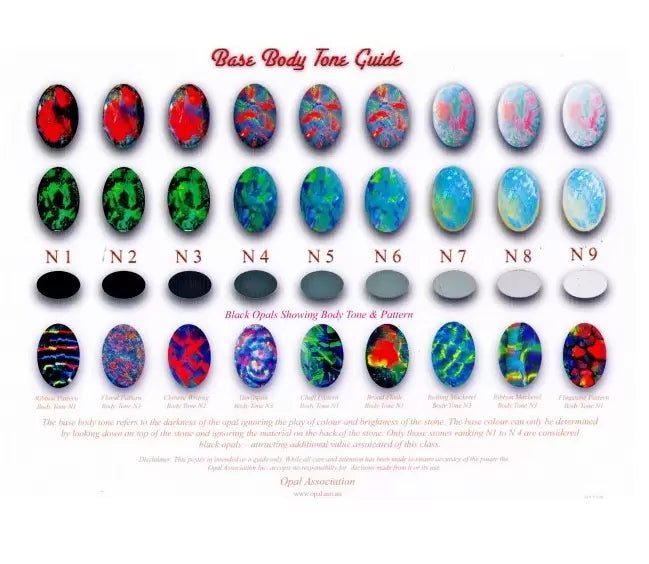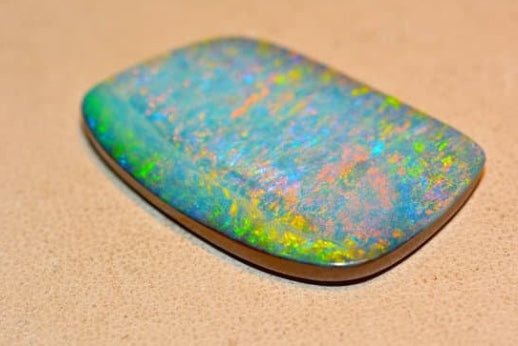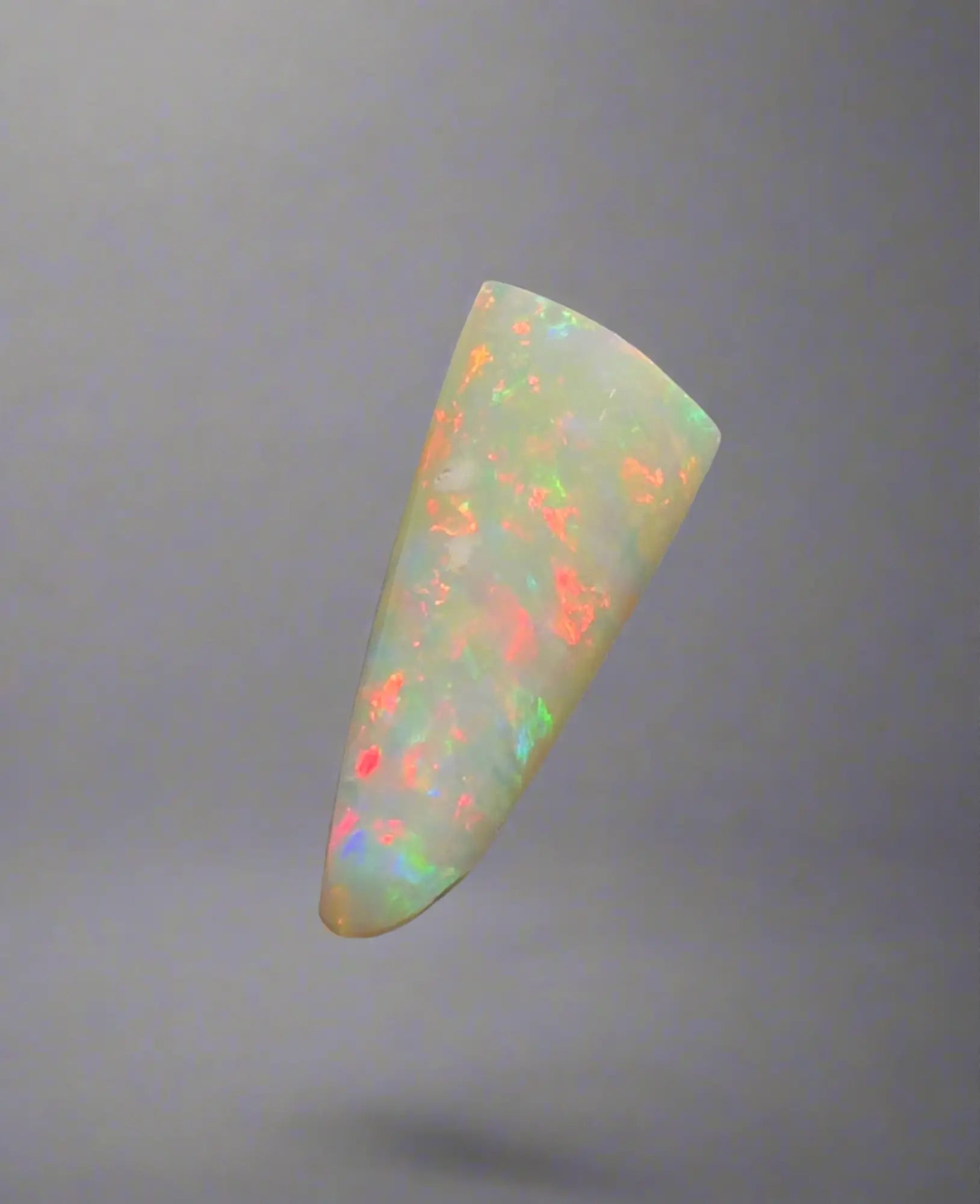
Understanding Opal Nomenclature & Classification
Opal Naming Conventions
Overview
Opal, a relatively common mineral found globally, is renowned for the play-of-colour seen in precious opals. This phenomenon remained a mystery until the 1960s when Australian scientists at the Commonwealth Scientific and Industrial Research Organisation (CSIRO) used an electron microscope to reveal opal's inner structure, responsible for its stunning colours.
Initially labeled as a 'semi-precious gemstone,' the discovery and marketing of Australian black opal elevated its status. Today, opals mined in New South Wales, South Australia, and Queensland support a multi-million dollar industry.
A major challenge for the opal industry has been creating a standardised way to describe a gemstone that can appear in almost every colour, from black to white, and in varying degrees of transparency. The following resulting nomenclature was the result of three years of efforts within Australia's opal industry to create a uniform system for describing opals.
Introduction
The terminology used to describe opal has long been debated by gemologists and the gem and jewellery industry. Aspects of this discussion have been documented in numerous papers over the history of "The Australian Gemmologist." Factors such as the increasing recognition of opal as a significant Australian resource, the global push to standardise gemstone terminology, and the rise of synthetic and imitation opals have made it necessary to establish a uniform nomenclature for opal.
In late 1993, the Australian Gemstone Industry Council asked the then-President of the Gemmological Association of Australia (GAA) to investigate the possibility of creating a standardised nomenclature for opal. A working sub-committee was formed, including representatives from the GAA, the Australian Gem Industry Association (AGIA), and the Lightning Ridge Miners Association (LRMA). After three years of discussion and revisions, a final draft nomenclature was agreed upon and published.
This nomenclature is accepted by the Australian Gemstone Industry Council (AGIC) and the GAA's Federal Conferences.
Opal Nomenclature and Classification
Introduction
Opal is Australia's National Gemstone, with the country producing 95% of the world's natural precious opal supply. The current nomenclature standardises the terminology for all types and varieties of opal without establishing a valuation methodology. The classification is a collaborative effort by the Australian Gemstone Industry Council, the Australian Gem Industry Association, the Gemmological Association of Australia, the Lightning Ridge Miners Association, and the Jewellers Association of Australia.
Opal Classification
Opal is a gemstone consisting of hydrated amorphous silica (SiO2.nH2O). It is categorised into two basic forms based on visual appearance:
- Precious Opal: Exhibits play-of-colour, caused by the diffraction of light through an orderly array of silica spheres, producing spectral hues.
- Common Opal and Potch: Does not exhibit play-of-colour. Potch has a disorderly arrangement of silica spheres, while common opal shows some micro-crystallinity.
Types of Natural Opal
Natural opal has not been treated or enhanced beyond cutting and polishing. There are three types of natural opal, defined by body tone and transparency:
- Natural Opal Type 1: Presented in one piece with a homogenous chemical composition.
- Natural Opal Type 2: Attached to the host rock of a different chemical composition (commonly known as boulder opal).
- Natural Opal Type 3: Diffused as infills in the host rock (commonly known as matrix opal).
Varieties of Natural Opal
Varieties are determined by body tone and transparency.
Body Tone: The relative darkness or lightness of the opal when ignoring play-of-colour.
- Black Opal: Displays play-of-colour on a black body tone (N1-N4 on the AGIA Body Tone Chart).
- Dark Opal: Displays play-of-colour on a dark body tone (N5-N6).
- Light Opal: Displays play-of-colour on a light body tone (N7-N9, with N9 referred to as white opal).
Transparency: Ranges from transparent to opaque. Transparent to semi-transparent precious opal is known as crystal opal.
Opal Treatments
Any method of treatment beyond standard cutting and polishing should always be disclosed. Treatments include colour enhancement, heating, painting, dying, resins, waxes, oiling, or any chemical application to alter the opal's appearance, structure, or durability.
Composite Natural Opal
Composite opals consist of natural opal laminates attached to another material. Types include:
- Doublet Opals: Two layers, with a slice of natural opal cemented to a dark base.
- Triplet Opals: Three layers, with a thin slice of natural opal between a dark base and a transparent top layer.
- Mosaic and Chip Opals: Small pieces of opal cemented as a mosaic on a dark base or embedded in resin.
At Iona Opal Australia we sell solid opal only. We do not carry doublets, triplets or quintuplets.
Synthetic and Imitation Opal
Synthetic Opal: Has the same chemical composition and physical structure as natural opal but is created in a lab. Iona Opal Australia does not sell synthetic opal.
Imitation Opal: Mimics the play-of-colour of natural opal but lacks the same physical and chemical structure. Iona Opal Australia does not sell imitation opal.
Classification and Valuation Reports
Reports for opal classification will often include:
Natural Opal:
- Type and variety (Black, Dark, Light)
- Body tone classification (N1-N9)
- Transparency (opaque, translucent, transparent)
- Weight and dimensions
Treated Opal:
- Type and variety
- Transparency
- Type of treatment and process
- Weight and dimensions
Composite Opal:
- Type (doublet, triplet, mosaic)
- Treatment process
- Dimensions
Synthetic and Imitation:
- Category and manufacturer (if known)
- Description (Body Tone)
- Type of composite (if applicable)
- Weight and dimensions
Origin
Indicating the origin of opal by geographical location should be qualified as a type of locality only, as recommended by the International Confederation of Jewellery, Silverware, Diamonds, Pearls, and Stones (CIBJO).
Photo credit: Opal Association of Australia




1 comment
Very informative post thank you
Robert Davis
Leave a comment
This site is protected by hCaptcha and the hCaptcha Privacy Policy and Terms of Service apply.